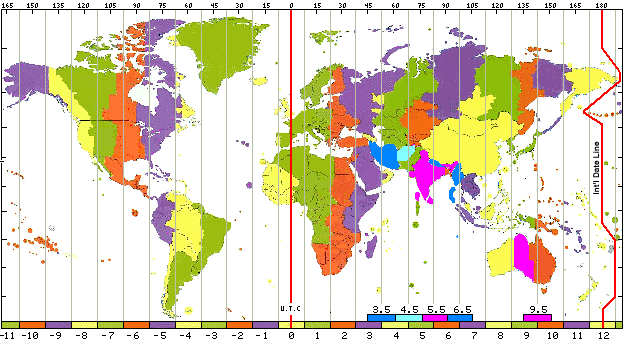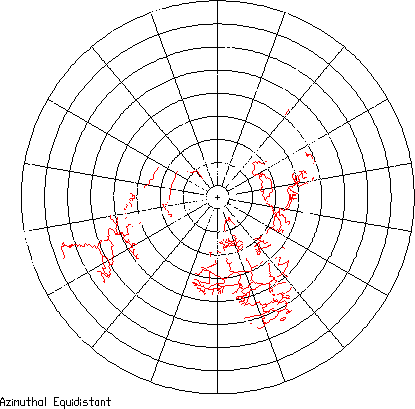UNDER CONSTRUCTION, DUH! |
|
|
    
|
This problem is recommended for those students looking for a tough problem. You should understand the geometry of a circle. If you were to walk around the world at the equator it would take about 346 days to travel the full 24,903 miles. You would have to walk 24 hours a day, at 3 m.p.h., and not have to contend with mountains, weather, water, hostile countries and/or homework. This would make the Eco-Challenge look like a walk in the park. This walk would require you to travel through each of the time zones and therefore all of the meridians (lines of longitude). Look at the map and count the time zones. As you walk around the world, you must remain parallel to the lines of latitude (not marked on this map).
The numbers at the top represent the
meridians or lines of longitude in 15 degree increments. The numbers at the bottom refer
to the change in time from the the Prime Meridian. As an
example, if it is 7 p.m. in London, England then it is -5 hours (7 p.m. - 5 hours = 2
p.m.) in Springfield, Massachusetts. (Coordinated Universal
Time(U.T.C) is a system used to indicate time in meteorology)
You will notice that this map does show the
latitude and longitude, but from a totally different perspective
(Azimuthal Equidistant). This perspective takes into account
the shape (sphere) of the planet. In this image we are looking
down on the earth from above the North Pole. The earth is also transparent.
|
|



